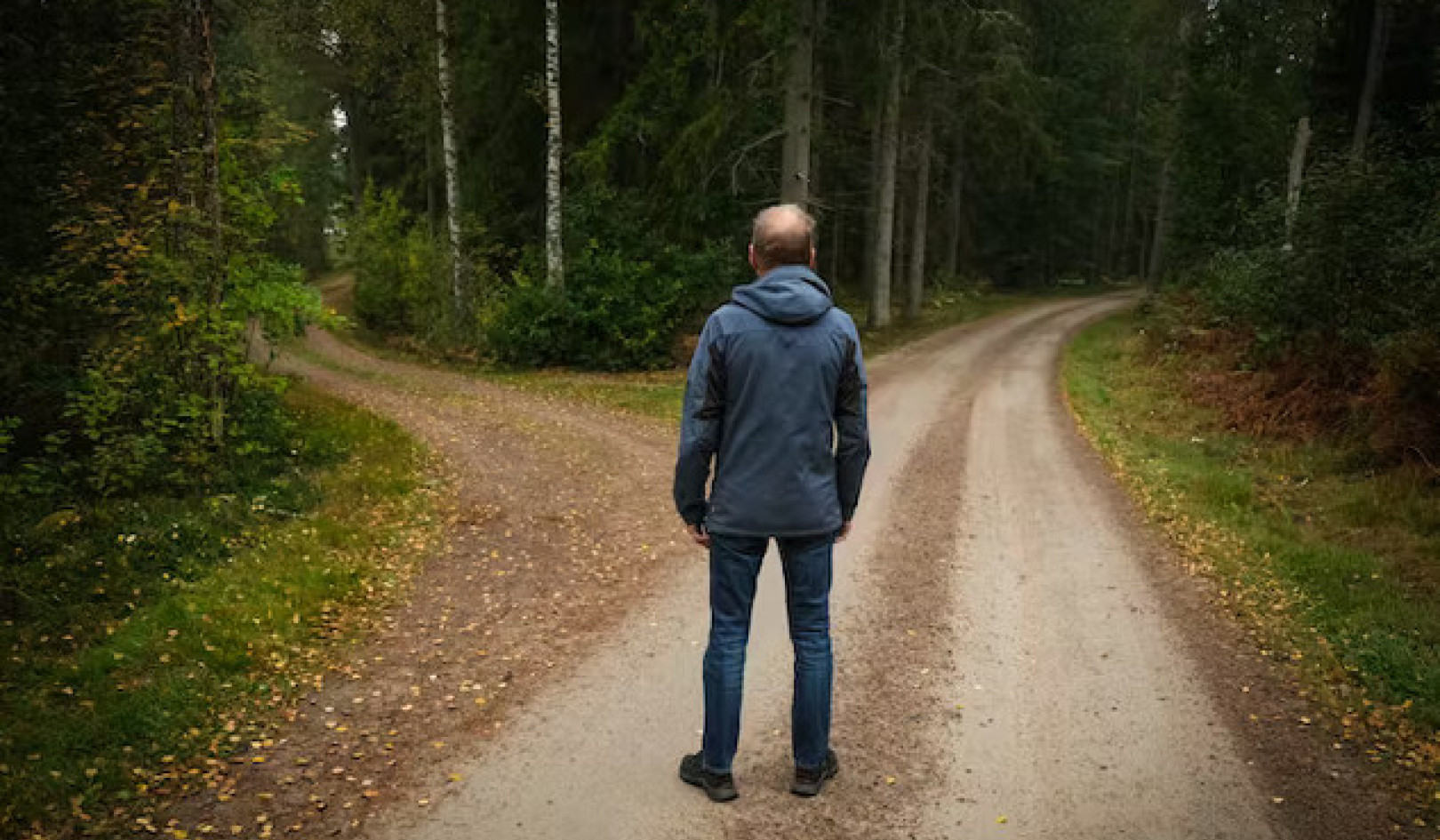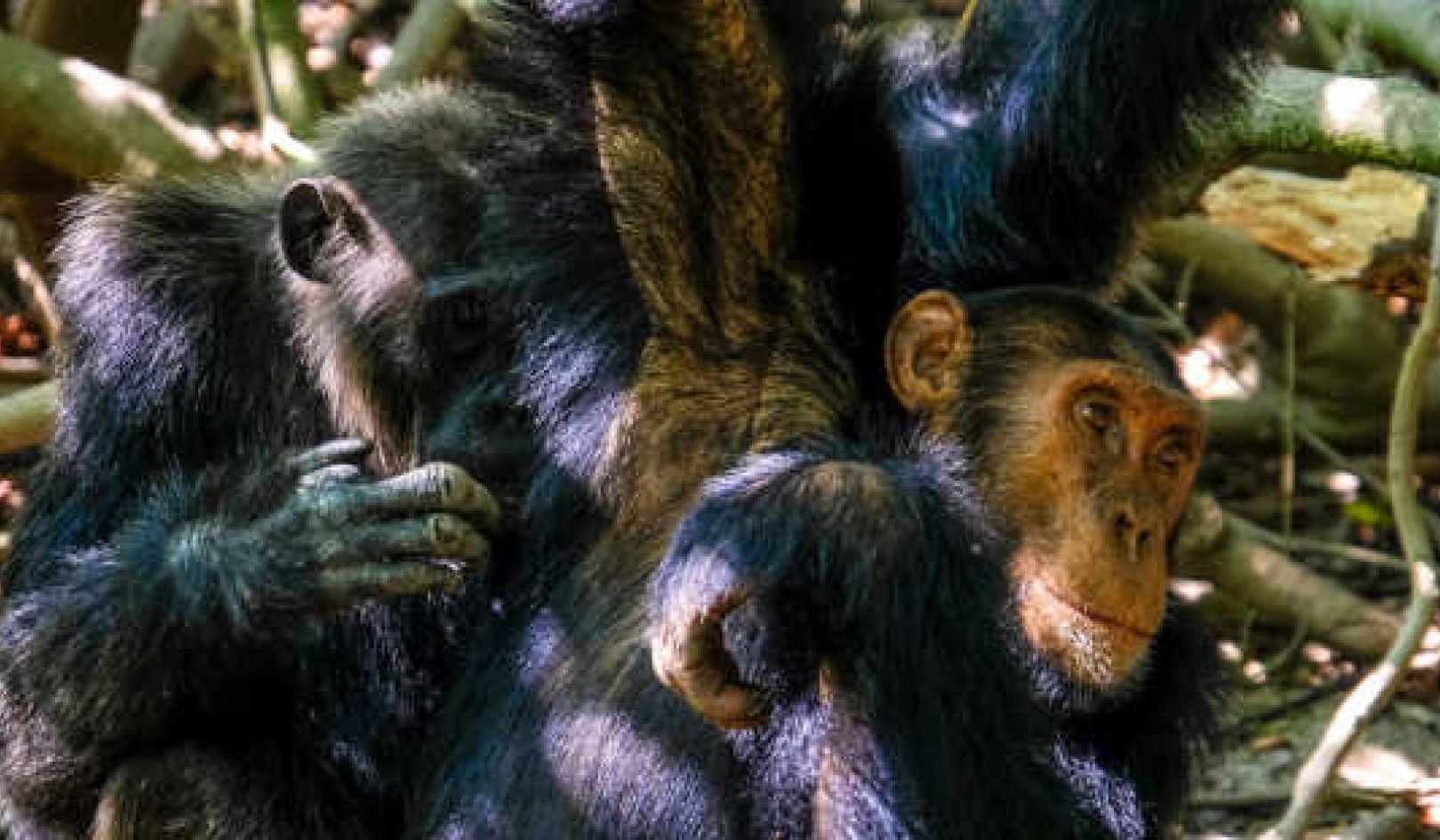
Image by Gerd Altmann
The seven practices of mindful leadership can benefit all aspects of our lives. Of course, we are each of us in charge of our own lives. But more to the point, gaps we identify at work, whatever our job, often relate to gaps we experience at home, in relationships, as parents, and so on. Gaps of pain and possibility exist in every realm, and sometimes, when we recognize a gap in one area, it can open up a flood of recognition that goes far beyond our original focus.
The title of a book about mindfulness by Jon Kabat-Zinn is Full Catastrophe Living. The phrase comes from the novel Zorba the Greek. At one point, a young man asks Zorba if he is married, and he replies, “Yes, I’m married. I have a wife, children, house, everything; the full catastrophe.”
In our own ways, each of us has our own “full catastrophe.” Our work and life situations are much more complex than even Zorba could have imagined. That said, while we at times can feel stuck in our own personal “catastrophes,” we are often attached to them as well. However, by shifting our awareness and patterns, we can learn to experience greater acceptance and at times awe and wonder right in the midst of the chaos and challenges of our lives.
MEDITATION MEANS LIVING WITH EYES WIDE OPEN
Stare. It is the way to educate our eye and more.
Stare. Pry. Eavesdrop. Listen.
Die knowing something. You are not here long.
— WALKER EVANS
When I first read this quote by photographer Walker Evans, I realized that my entire adult life I have practiced staring through meditation. I was introduced to Zen meditation when I was twenty-two years old, when I first arrived at the San Francisco Zen Center, and the experience changed my life. Meditation has been a fundamental practice for me ever since, and it is a core practice for mindful leaders.
While Evans doesn’t seem to be talking about meditation, he captures it perfectly. When meditating, we stare, pry, eavesdrop, listen. We become aware and pay attention, both inside and out, so that we educate ourselves and “know something” worthwhile and useful. Indeed, we often meditate to see and understand what is most important, acutely aware that we are not here long.
Strangely enough, I’ve found that meditation and leadership have much in common. Both mean living with our eyes wide open. As a practice, meditation sounds deceptively simple: just stopping, sitting, bringing full awareness to body, mind, and heart; letting thoughts and emotions come and go; cultivating kindness and curiosity; touching life’s pains and disappointments, its joys and possibilities; cultivating an appreciation for being alive and for all of life, along with a radical sense of belonging and connection. Another way to describe meditation is the practice of being your true, authentic you by letting go of your ideas and identification with self.
Meditation helps us live with an appreciation of the power and preciousness of our human life. Meditation practice and all contemplative practices can be described as cultivating depth and sacredness in our everyday lives. This is what makes it mindful: Our practice helps us see what is going on, all our gaps, all our pains and possibilities, the full catastrophe.
Through meditation, as we stare, pry, listen, we learn to recognize, not only how to get things done, but how to get the most important things done with the least amount of resistance or unnecessary effort. We recognize what we can influence and what we can’t, and so act more effectively. We connect more deeply with others and become better listeners.
At times, meditation means fiercely struggling for change, and at times it means practicing radical acceptance. Meditation teaches suppleness and adaptability, confidence and humility. Perhaps most important of all, meditation helps lighten our hearts, helps us let go of cynicism, and opens us to our profound lack of separation from ourselves, from other people, and all life — which are important qualities for leadership and for life.
AVOIDANCE IS NATURAL BUT SELF-DEFEATING
At times, staring and focusing can be painful, and we usually avoid what is painful; that’s a natural reaction. But this avoidance can keep us from achieving what is possible, since this requires naming and transforming what is painful. Avoidance is often one of the main obstacles to mindfulness, to mindful leadership, and to creating a supportive organizational culture.
We have to choose to stare, to open our eyes and wake up. When we don’t, and when avoidance becomes a habit, we stop wholeheartedly engaging with ourselves and with life. We become numb, fall asleep to what is, and stop seeing clearly.
This is more than a leadership or workplace issue. It’s a universal human problem, one that’s almost inherent to who we are as evolved beings: We can’t see everything all the time, we naturally turn away from what causes pain, and we don’t like change. Avoidance can sometimes feel like self-preservation, but it’s actually self-defeating. Learning to look directly at what is, as much as possible, even when we don’t want to, is a powerful skill that challenges us, changes us, and transforms our lives.
For example, I think of myself as having been asleep through much of the early part of my life. I grew up in the suburbs of New Jersey and lived what I considered a fairly “normal” life. I got good grades, played sports — bowling, golf, football, and baseball. I watched many hours of television and worked during the summers, caddying on golf courses, stocking items in a lumberyard, and working in a local hospital laundry room. The food I ate was mostly packaged and canned.
This numbness, ignoring, or turning away from anything that was uncomfortable was in place as part of my birth — my mother was highly medicated as I was entering this world, so that she would experience the least amount of pain possible — and it continued at school, where we had regular nuclear bomb practice drills, duck and cover.
It included my visits to the Veterans Administration Hospital, where my father received shock treatments for bipolar disorder, which I now suspect was post-traumatic stress disorder. My father fought on the front lines in France and Germany during World War II, but along with my feelings, aspirations, and doubts, this fell into the category of things no one talked about.
I didn’t know it growing up, but I was between worlds: between the world of feeling separate to emerging to a world of connection; from being asleep and unaware of my own pain and the pain around me to a world of intense feelings, tears, grief, celebration, and joy. From a world of ignoring the depths of the aspirations of my heart, pretending that everything was just fine, to a world of longing, struggling, and loving. Learning to love the “full catastrophe” of this crazy mixed-up world and the struggle of attempting to make sense of it all.
A similar narrative is at play today. We are between worlds and the need for mindfulness and mindful leadership has never been greater. I imagine that this is always true, but the stakes and intensity appear particularly profound at this juncture: Climate change, nuclear weapons, inequality, and terrorism are at the top of the list. Major changes in world economies, politics, health care, and our food and water systems are collapsing and being reborn at the same time. All are being catalyzed and transformed with this same power — the power of shifting from autopilot and denial to greater attention, awareness, and wakeful consciousness; the power of acknowledging our pain and the possibility of transforming this pain through staring, prying, not turning away.
We are beginning to wake up to what is and to what is possible. It’s not easy. This awareness — of love, of gaps, of the poignancy of passing time, of the fact that we are not here long — can crush my heart. At the same time, the very experience of life, the pain and possibility of this human life in its totality, exhilarates me. Appreciating your life — seeing, accepting, and enjoying your life to the fullest, including all of its pains and possibilities — is what this book and the seven practices are all about.
THE SEVEN PRACTICES OF MINDFUL LEADERSHIP
In 1995, Daniel Goleman’s groundbreaking book Emotional Intelligence was a catalyst that inspired businesses and executives to embrace the importance of emotional skills and competencies. Goleman’s work sparked a revolution in interest in emotional intelligence that was quickly adopted by corporations worldwide and used in leadership trainings.
It’s easy to understand why. Despite the fact that it is difficult to quantify or measure “emotional intelligence,” we know it is essential and we recognize it when we see it.
There are five key areas or competencies that make up emotional intelligence, and there is a great deal of agreement about (and research confirming) the benefits we get when we cultivate these areas:
- SELF-AWARENESS: knowing our internal states, preferences, resources, and intuitions.
- SELF-MANAGEMENT: turning compulsion into choice; managing our impulses, resources, and intuitions.
- MOTIVATION: knowing what is important to us, aligning with our values, and knowing when we are not in alignment with our values; cultivating resilience.
- EMPATHY: awareness of the feelings of others; cultivating connection and trust.
- SOCIAL SKILLS: cultivating our communication skills, especially listening, engaging skillfully with conflict, and leading with compassion.
All this sounds excellent. It paints an attractive portrait of the ideal business leader, and many predicted that emotional intelligence training would lead to a revolution in the workplace, creating just the type of positive corporate culture Peter Drucker and other experts say we need.
What’s interesting, however, is that despite the widespread adoption of emotional intelligence programs in the United States and globally, that revolution never came. Leadership, workplace environments, and employee well-being did not become transformed.
Ten years after publishing Emotional Intelligence, Goleman published a follow-up book, Working with Emotional Intelligence. In the chapter “The Billion-Dollar Mistake,” Goleman describes what went wrong. Companies attempted to train leaders in emotional intelligence like any other subject, primarily through lectures and reading. They taught the concepts, and yet very few of these trainings ever practiced or embodied the concepts.
Emotional intelligence programs explained a lot and did very little. People did not practice the core underlying competencies they needed to learn in order to actually shift emotional intelligence — such as focusing one’s attention, exploring how individuals construct reality, and actively practicing selflessness and compassion. All these things are fundamental parts of mindfulness practice, but they were not included in emotional intelligence training at that time. Thus, without the component of practice, the revolution proved to be a failure.
THE POWER OF PRACTICE
I’ve always appreciated the corny joke about the out-of-town visitor to New York City who asks a stranger: “How do I get to Carnegie Hall?” Without hesitating, the stranger responds, “Practice, practice, practice.”
When people ask me, “How can I bridge the gaps between where I am and where I want to be?” I’m always tempted to give the same answer: “Practice!” It’s humorous but true.
Practice has several meanings, depending on the context. As the joke implies, you can’t succeed at anything without practice, or learning the skills you need by exploring them over and over. Whether playing the piano or playing tennis, preparing for a performance or writing a report, you only improve through repetition. By doing.
During the years I spent living (and practicing) at the San Francisco Zen Center, the word practice referred to a way of life — it referred to the practice of meditation as well as to the expression of our deepest and most primary intentions. The aspiration was to integrate meditation and mindfulness practice with our relationships, work, and day-to-day activities. In this sense, our “practice” was our perspective. Our practice sought to integrate all our actions with our values and intentions.
I decided to name the seven competencies in this book “practices” for all these reasons. They are meant to be practiced in order to build skills and support integration. And they describe an approach, a way of life, and an expression of our deepest intentions. Through practice in each of these seven areas, we can transform pain into possibility.
Practices are values and intentions expressed in action. Practices are like habits, since they build a muscle memory over time. But they are more than good habits. Practices express our intention to transform our life toward our highest aspirations, for realizing our full potential and for helping others.
THE SEVEN PRACTICES: MINDFULNESS IN ACTION
Mindfulness can be (and has been) characterized in many different ways. However, for the purpose of training mindful leaders, I’ve distilled seven mindfulness practices:
- Love the work
- Do the work
- Don’t be an expert
- Connect to your pain
- Connect to the pain of others
- Depend on others
- Keep making it simpler
These aren’t your typical mindfulness instructions. To me, mindfulness is so much deeper and wider — so much more profound, messy, and mysterious — than is usually portrayed. To me, the point of mindfulness isn’t to succeed at meditation, or to understand certain concepts, or to create inner peace by holding the busy world at bay. Rather, the point of mindfulness practice is to cultivate a more alive, responsive, effective, and warmhearted way of being within the world as it already exists and within the life you already live.
What makes mindfulness somewhat challenging to explain and understand is that it involves a certain amount of paradox. For instance, the renowned Zen teacher Shunryu Suzuki once said, “You are perfect just as you are, and you can use a little improvement.”
Thus, mindfulness practice sees and embraces two worlds at the same time: the universal and the relative, or Big Mind and Small Mind. On the one hand, the aim is radical acceptance of yourself and your experience. You are perfect as you are in the grand, universal scheme of things. Yet this is distinct from the relative world, and only here do you need some improvement.
From the absolute perspective, you really are perfect, including your struggles, pains, desires, and aversions. Yet a core part of mindfulness practice is becoming familiar with your individual patterns and tendencies, your fears and dissatisfactions, and engaging with them to transform the everyday problems of life instead of ignoring them or pushing them away.
Here is a brief description of what the seven practices are all about.
INVESTIGATE
- LOVE THE WORK: Start with inspiration, with what is most essential. Acknowledge and cultivate aspiration — your deepest, most heartfelt intentions.
- DO THE WORK: Have a regular meditation and mindfulness practice. Learn to respond appropriately at work and in all parts of your life.
- DON’T BE AN EXPERT: Let go of thinking you are right. Step in to greater wonder, openness, and vulnerability.
- CONNECT TO YOUR PAIN: Don’t avoid the pain that comes with being human. Transform pain into learning and opportunity.
CONNECT
- CONNECT TO THE PAIN OF OTHERS: Don’t avoid the pain of others. Embody a profound connection to all humanity and life.
- DEPEND ON OTHERS: Let go of a false sense of independence. Both empower others and be empowered by others to foster healthy group dynamics.
INTEGRATE
- KEEP MAKING IT SIMPLER: Let go of a mindset of scarcity. Cultivate awe and wonder. Integrate mindfulness practice and results.
Copyright ©2019 by Marc Lesser. All Rights Reserved.
Printed with permission from New World Library
www.newworldlibrary.com
Article Source
Seven Practices of a Mindful Leader: Lessons from Google and a Zen Monastery Kitchen
by Marc Lesser
 The principles in this book can be applied to leadership at any level, providing readers with the tools they need to shift awareness, enhance communication, build trust, eliminate fear and self-doubt, and minimize unnecessary workplace drama. Embracing any one of the seven practices alone can be life-changing. When used together, they support a path of well-being, productivity, and positive influence.
The principles in this book can be applied to leadership at any level, providing readers with the tools they need to shift awareness, enhance communication, build trust, eliminate fear and self-doubt, and minimize unnecessary workplace drama. Embracing any one of the seven practices alone can be life-changing. When used together, they support a path of well-being, productivity, and positive influence.
Click here for more info and/or to order this paperback book. Also available in a Kindle edition.
About the Author
 Marc Lesser is a CEO, Zen teacher, and author who offers trainings and talks worldwide. He has led mindfulness and emotional intelligence programs at many of the world’s leading businesses and organizations, including Google, SAP, Genentech, and Twitter. You can learn more about Marc and his work at www.marclesser.net and www.siyli.org.
Marc Lesser is a CEO, Zen teacher, and author who offers trainings and talks worldwide. He has led mindfulness and emotional intelligence programs at many of the world’s leading businesses and organizations, including Google, SAP, Genentech, and Twitter. You can learn more about Marc and his work at www.marclesser.net and www.siyli.org.



























